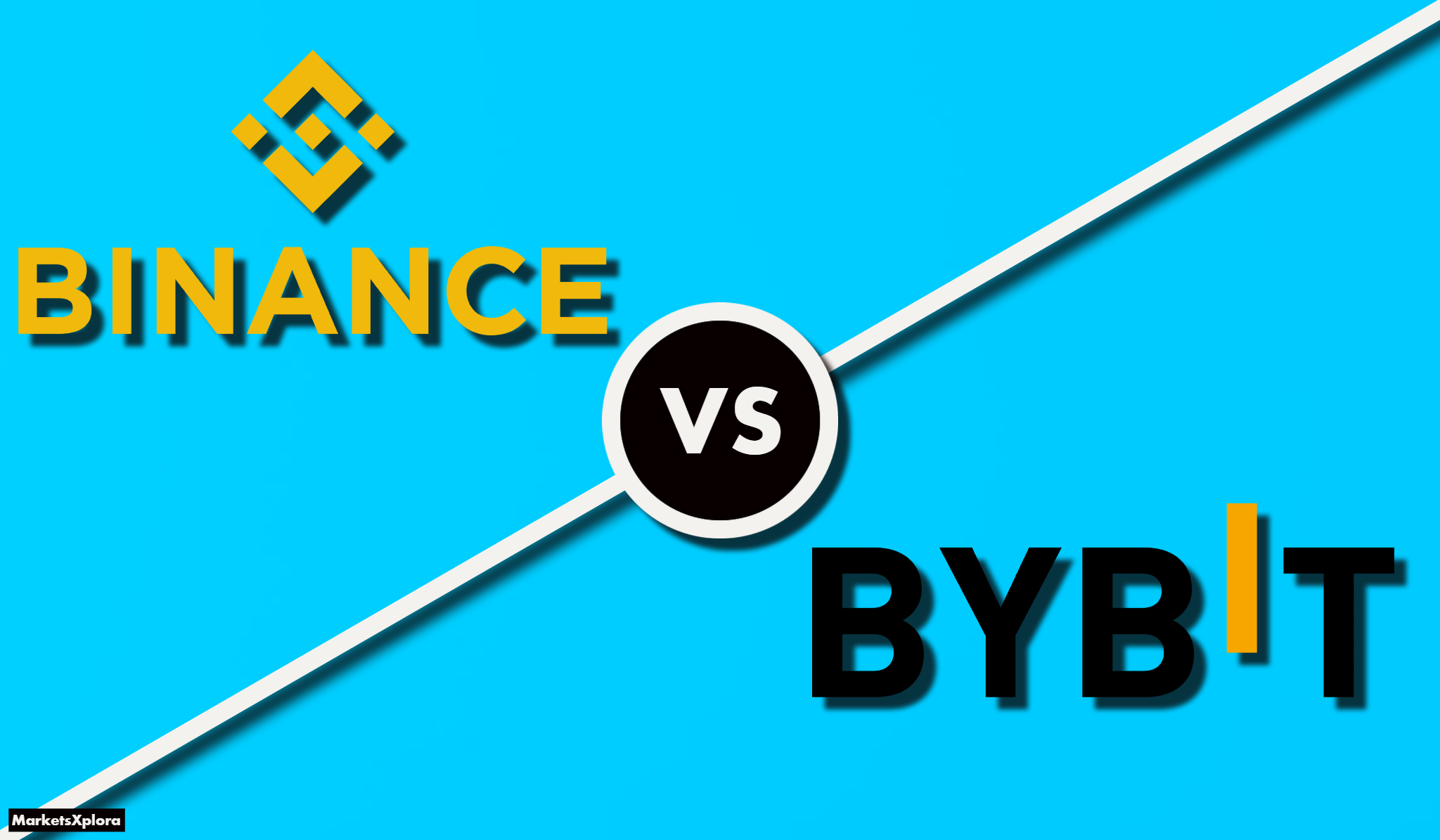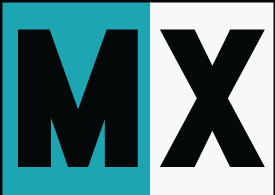
If you’re scratching your head trying to choose between Binance and Bybit, you’ve landed in the right place. Choosing the right exchange can make or break your crypto journey. I’ve tested both exchanges and that’s why I’ve put this Bybit vs Binance in this comparison.
In this review, we’ll cover:
- Each exchange’s background
- What you can trade (and how)
- Fees and costs
- Security
- Regulatory Compliance and Legal Status
- User Experience
- Additional Services and Features
Ready to find out which exchange is right for you? Let’s roll!
Binance vs Bybit: Company Background
When choosing a crypto exchange, it’s good to know a bit about the company behind it. Let’s look at how Binance and Bybit stack up:
Feature |
Binance |
Bybit |
|---|---|---|
Founded |
2017 |
2018 |
Founder |
Changpeng Zhao (CZ) |
Ben Zhou |
Headquarters |
No fixed HQ (originally China) |
Dubai, UAE |
Current CEO |
Richard Teng |
Ben Zhou |
Notable fact |
Largest crypto exchange by volume |
Known for derivatives trading |
My take: Binance has been around longer and is bigger, which can mean better liquidity. But Bybit’s focus on derivatives might appeal to certain traders. For beginners, Binance’s size and history could feel more reassuring.
Trading Features and Products
Now, let’s dive into what you can actually do on these platforms:
Feature |
Binance |
Bybit |
|---|---|---|
Cryptocurrencies |
350+ |
160+ |
Spot trading |
Yes |
Yes |
Futures |
Yes |
Yes |
Options |
Yes |
Yes |
Margin trading |
Yes |
Yes |
Staking |
Yes |
Yes |
Savings products |
Yes |
Yes |
Launchpad for new tokens |
Yes |
Yes (Called Bybit Launchpool) |
NFT marketplace |
Yes |
Yes |
My take: Binance offers more coins, which is great if you like variety. But Bybit’s smaller selection might be less overwhelming for newbies. Both cover all the major trading types, so you’re not missing out on much either way. I’d say Binance is better for those who want a one-stop-shop, while Bybit could be great for folks focused on derivatives.
Read also ↓
How to Trade on Bybit for Beginners
How to Trade on Binance in 5 Minutes
Fees and Costs
Let’s talk money – here’s how the fees compare:
Fee Type |
Binance |
Bybit |
|---|---|---|
Spot trading (maker/taker) |
0.1% / 0.1% |
0.1% / 0.1% |
Futures trading (maker/taker) |
0.02% / 0.04% |
0.01% / 0.06% |
Deposit fees |
Free for crypto |
Free for crypto |
Withdrawal fees |
Varies by crypto |
Varies by crypto |
Fee discounts |
Yes, with BNB |
Yes, with loyalty program |
My take: The fees are pretty similar, but Binance’s huge volume often means better liquidity, which can save you money on large trades. Bybit’s maker fees on futures are slightly lower, which is nice for high-volume traders. For most everyday users, the difference isn’t huge. I’d say go with Binance if you’re doing a bit of everything, but Bybit if you’re really into futures trading.
Remember, these comparisons are based on my current knowledge, and exchanges can change their offerings pretty quickly. Always double-check the latest info on their websites before making a decision!
Security Measures
When it comes to crypto, security is super important. Let’s see how our two exchanges stack up:
Feature |
Binance |
Bybit |
|---|---|---|
Two-Factor Authentication (2FA) |
Yes |
Yes |
Cold Storage |
Majority of funds |
Majority of funds |
Whitelisting |
Yes |
Yes |
Insurance Fund |
Yes (SAFU) |
Yes |
Major Security Incidents |
2019 hack ($40M lost, covered by Binance) |
None reported |
My take: Both exchanges take security seriously, which is great. Binance’s SAFU fund is a big plus, as it’s specifically designed to cover user losses in worst-case scenarios. Bybit hasn’t had any major security hiccups, which is reassuring. For peace of mind, I’d lean towards Binance, but Bybit’s clean record is nothing to sneeze at.
Regulatory Compliance and Legal Status
The crypto world can be a bit of a regulatory maze. Here’s how these exchanges navigate it:
Aspect |
Binance |
Bybit |
|---|---|---|
Headquarters |
No fixed HQ |
Dubai, UAE |
Major Licenses |
Multiple, varies by region |
VARA (Dubai) |
US Availability |
Limited (via Binance.US) |
Not available |
Recent Regulatory Issues |
Major settlement with US authorities in 2023 |
Warnings from some regulators, no major settlements |
My take: Binance has had its share of regulatory troubles, but it’s also more widely licensed. Bybit is newer to the regulation game but seems to be making efforts. If you’re in the US, Binance.US is your only option between these two. For users elsewhere, Binance’s wider recognition might feel safer, but always check the specific rules for your country.
Liquidity and Trading Volume
Now, let’s talk about how easy it is to buy and sell on these platforms:
Aspect |
Binance |
Bybit |
|---|---|---|
Daily Spot Trading Volume |
~$65 billion |
~$37 billion |
Daily Derivatives Volume |
~$50 billion |
~$44 billion |
Number of Trading Pairs |
350+ |
160+ |
Typical BTC/USDT Spread |
Very tight (often <$0.10) |
Tight (often <$0.50) |
My take: Binance is the clear winner in terms of sheer volume and liquidity. This usually means better prices and easier trading, especially for popular pairs. Bybit holds its own, especially in derivatives, but it can’t match Binance’s massive liquidity. If you’re trading less common pairs or doing large trades, Binance’s deeper markets could save you money. For most everyday traders, though, both offer enough liquidity for smooth trading.
Remember, these numbers can change quickly in the crypto world. But in general, Binance is the liquidity king, while Bybit is a solid contender, especially for derivatives enthusiasts.
Additional Services and Features
Both Binance and Bybit offer more than just trading. Here’s what else you get:
Feature |
Binance |
Bybit |
|---|---|---|
Mobile App |
iOS and Android |
iOS and Android |
Educational Resources |
Binance Academy |
Bybit Learn |
Customer Support |
24/7 chat, email |
24/7 chat, email |
API for Algo Trading |
Yes |
Yes |
Unique Features |
Binance Card, Binance Pay |
Bybit Card, ByFi Center |
My take: Both exchanges have solid mobile apps and learning resources. Binance’s Academy is more extensive, which is great for newbies. Bybit’s ByFi Center for earning crypto interest is pretty cool. For most users, either platform will cover your needs, but Binance edges ahead with its wider range of extra features.
Pros and Cons
Let’s break down the good and the not-so-good:
Binance
- Pros:
- Huge variety of coins and trading pairs
- Best-in-class liquidity
- Low fees, especially with BNB
- Cons:
- Can be overwhelming for beginners
- Has faced regulatory challenges
- Customer support can be slow during peak times
Bybit
- Pros:
- User-friendly interface
- Strong focus on derivatives trading
- Good educational resources for new traders
- Cons:
- Fewer coin options than Binance
- Not available in the US
- Lower trading volume than top exchanges
User Experience
Getting started and using the platform daily is crucial. Here’s how they compare:
Aspect |
Binance |
Bybit |
|---|---|---|
Account Creation |
Quick, email verification |
Quick, email verification |
KYC Levels |
Tiered system, more info = higher limits |
Basic and Advanced verification |
Deposit Methods |
Crypto, bank transfer, credit card |
Crypto, bank transfer, credit card |
Withdrawal Speed |
Fast for crypto, 1-3 days for fiat |
Fast for crypto, 1-5 days for fiat |
Platform Design |
Feature-rich, can be complex |
Cleaner, more intuitive for beginners |
My take: Bybit feels easier to navigate at first, especially for newbies. Binance has more features but takes some getting used to. Both have smooth deposit and withdrawal processes. If you’re just starting out, you might prefer Bybit’s simpler layout. If you’re after all the bells and whistles, Binance is your go-to.
Community and Ecosystem
A strong community can make a big difference. Let’s see how these exchanges stack up:
Aspect |
Binance |
Bybit |
|---|---|---|
Active Users |
150+ million |
39+ million |
Twitter Followers |
12+ million |
14+ million |
Telegram Members |
2+ million (multiple groups) |
400K+ |
Notable Partnerships |
UEFA, Formula 1 |
Oracle Red Bull Racing, Borussia Dortmund |
Blockchain Ecosystem |
Binance Chain, Binance Smart Chain |
No native blockchain |
My take: Binance has a massive community, which means more liquidity and a busier ecosystem. Bybit is growing fast but still has a way to go. Binance’s own blockchain is a big deal for developers and DeFi enthusiasts. If you’re after a bustling community with lots going on, Binance is the clear winner. But don’t count Bybit out – their community is super engaged, especially in the derivatives trading world.
Remember, the crypto world moves fast, so always double-check the latest info. But this should give you a good idea of how these two stack up!
Bybit vs Binance – Which is better?
For most users, I’d recommend Binance. Here’s why:
- Largest variety of coins and trading options
- Unbeatable liquidity for smooth trades
- Lower fees, especially with BNB
- Strong security track record with SAFU fund
- Vast ecosystem for growth (DeFi, NFTs, etc.)
Bybit is great for derivatives trading, but Binance’s all-round strength makes it the top pick for both beginners and pros alike.
Bottom Line
Choosing between Binance and Bybit isn’t just about features – it’s about finding your crypto home. Take your time, maybe try both, and see which feels right. Remember, the best exchange is the one that fits YOUR needs. Happy trading, and may your crypto journey be profitable!
FAQ
- Where are Bybit and Binance located?
Bybit is headquartered in Dubai, UAE. Binance doesn’t have a fixed HQ, operating globally.
- Are Binance and Bybit legit?
Yes, both are legitimate and popular exchanges. Always do your own research and use caution.
- Binance vs Bybit, which is bigger?
Binance is bigger Bybit in terms of trading volume and global user base.
Read also ↓

